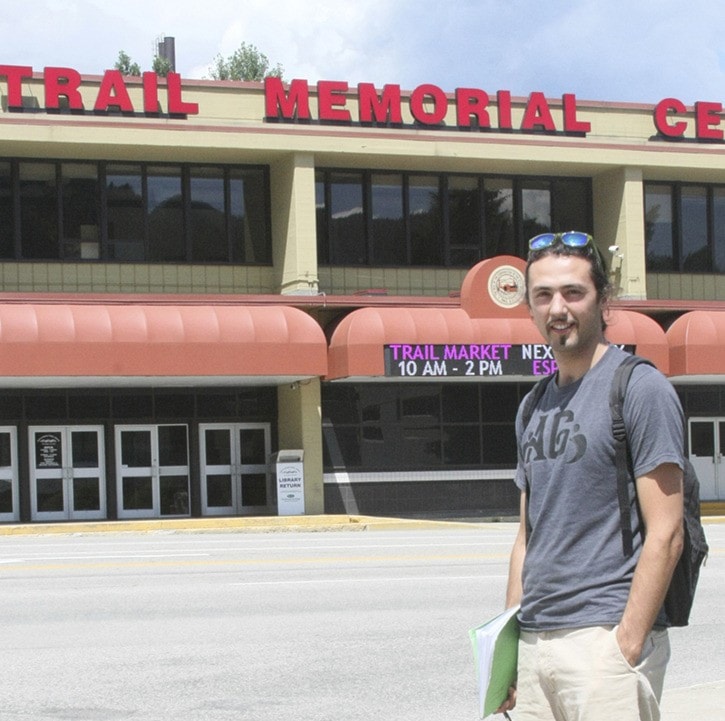A year-long study of the Silver City and its abundance of history and culture has culminated in a golden master thesis by architect student Austin Hawkins.
Hawkins is showing his final design development of the city in the Trail Memorial Centre (TMC) tonight at 7:30 p.m. outside the library, and invites the community to view his display made from “beautiful materials recycled from the depths of the Trail Memorial Centre.”
The display includes delicate collages, drawings, photographs and models that reflect his detailed research into Trail’s human history, landscape, mining, smelting and Italian culture.
“Photographing the entire Greater Trail area and researching the use and transportation patterns of ore and metal, and studying those photographs helped me understand the essence of Trail,” said Hawkins. “My project develops and demonstrates techniques for finding the value in this cityscape and making choices about what to do with it in the future.”
The University of British Columbia student is in his third year of architectural studies and decided to make Trail and its struggle to revitalize, the centre of his thesis after visiting the city for a first-time look last January.
After months of intense design work and non-stop 12 to 14 hour days, Hawkins presented his redesign plan of the centre to architectural critics in Vancouver earlier this year.
“After all this, I feel the essence of Trail is the study of layers and refinement and the deposition of new layers through process,” said Hawkins. “This way of looking at the valley originated with miners in Rossland studying geological strata and betting their entire fortunes by staking mining claims,” he continued. “These were daring people who looked for the value in layers of landscape, and to revitalize Trail, the people of this valley must again dare to look at the layers.”
Hawkins developed a design focus on the TMC after understanding the facility’s relevance to the community with a schematic design and material strategy to regenerate the continuity between its prosperous past and the opportunities of the future.
“New variety as well as common circulation and visual and physical connection to the cityscape would increase its use enormously,” he explained. “Right now, the TMC is a labyrinth, it only needs reorganization. It is a gold mine, but a gold mine is nothing without a refinery.”
Finally, Hawkins suggests that Trail should not consider constructing new buildings, rather the city needs to look at how existing buildings can be better used.
“Trail currently has a number of buildings in south downtown that currently act as cold sponges for social energy,” he said. “Their emptiness is a barrier to Trail’s livelihood. Heritage is not found in perfect shape, it is developed by the consistent care of current buildings until they become old, and the care and maintenance devoted to them becomes obvious.”
